Shared among gamer parents is the dream that your kid might join you in your hobby. You lay the foundation with children's board games - none of those Goodwill staples, but well-designed, meticulously researched choices that serve as stepping stones toward the hobby. These don't have to be dedicated 'kid's games'; you'd be surprised at what your child can learn when you really analyze what skills the game asks of you. Often, reading hidden information is the barrier.
My oldest is 11, and while I ran her through the full gamer training program, the hobby never fully took with her. She enjoys games, but largely for the social aspects; narrative seems to be the key component that hooks her. But the younger one Ivy - 7 just this month - borders on prodigy status. At 4 her favorite game was Overboss; at 5, she was playing Everdell and Wingspan; and this summer, she learned to play Root to a level that makes me question my own aptitude.
Last year, the world was introduced to Disney Lorcana; and while I can't recommend the game in any serious context, it served as the perfect way to introduce my kids to the TCG concept of owning and maintaining your own decks. Ivy was 5 when I brought cards home from GenCon (hard fought over days of trying - and failing - to make it to the front of hours-long lines). At the time, she was still working on reading, but we went through the effects of every card in her deck as we built it, and I swear to you she had them all memorized so she didn't have to show her hand and give away her strategic advantage. Lorcana was a preeminent game in our house for the better part of a year, until Ivy started eyeing up the other TCG in my game room.
Any TCG dad will tell you there are times when the only way to make game night is to tote the kids along. Flesh and Blood was not foreign to my kids, nor was the Armory scene an unknown quantity. My locals know my kids, and bringing them by doesn't draw any skeptical looks. So the prospect that Ivy might come along to an Armory and actually play was inherently appealing to her, and I wasn't concerned that anyone would trample over her novice gameplay without mercy.
But of course, TCGs are complicated, and Flesh and Blood loads the bulk of that complexity into in-game decisions. It was going to be important to choose a deck that utilized consistent, recurring playlines and simple rules-of-thumb.
We started learning Flesh and Blood with the heroes that appealed to her: Dorinthea, Ira, Briar, and Dash. But when it came time to get Armory-ready, I sold her on a more straightforward hero: Fai.
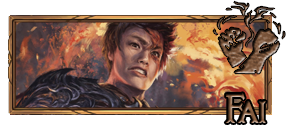
Before we get into the specifics, I want to lay out some guidelines for kid-friendly Flesh and Blood. By keeping these things in mind, you can drastically increase your chances of success.
Prerequisites
These are the skills you want your kid to have mastered before setting them up with their own deck.
1. Simple math: Addition and subtraction are essential to the game, including an understanding of the + and - symbols. It's important that they see how defending is subtracting; how the attack value of a card compares to the defense value on it; and how modifiers impact both sides of the equation.
2. Purchasing: This is the rough concept of resources: that cards have costs, and you need to pay them. It doesn't take much to impress on them that a card that pitches for 3 can pay for a lot of things. (I highly recommend a resource coin such as the ones made by metalfabtokens to keep track of 'floating' resources.)
3. Reading: The level of reading required by a deck can vary widely - and if more reading comprehension is requires on open information sources like equipment and the hero, you can supplement that for them. But they need to be able to read the cards in their hand and understand them. This may seem obvious, but there's a difference between 'able to sound our' and 'able to read in their head' - the latter is needed!
4. Sequencing: Again, the level of sequencing required can vary by deck, but I've found that it's one of the most compelling aspects of the game for my kid, so I wouldn't avoid it. When a deck has broad-strokes goals that you can articulate, they can set themselves to the task of finding how their hand can be placed in an order to make that happen. (For some, a card tray might help here.)
5. Good Sportsmanship: LSS' recent Armory commercial did an excellent job at portraying a realistic first Armory experience: going 0-3. If your kid isn't used to losing games, I advise you stop letting them win; it's important that they learn to find fun in a game well played, not a game won. Check yourself that you're modeling this behavior also.
6.* For lack of a better word, let's call this graphic considerations. Flesh and Blood is rated 16+, and they've taken full advantage of those generous guardrails to deliver a variety of thematic experiences that appeal to an array of players. Some of those are not going to be a fit for your kid - and how they handle that is something you want to be alert to, especially if you're planning to bring them to a public event.
I landed on Fai due in large part to how he checked all those boxes.
Fai uses simple math, with most cards stating clearly their attack and defense, and few modifications. Fai uses a lot of 3s, but also has some ways to give +1s, which is a cool way to teach the significance of jumping from 3 to 4. Fai's best attacks tend to have the worst defenses, which means you're naturally drawn to blocking with the right cards.
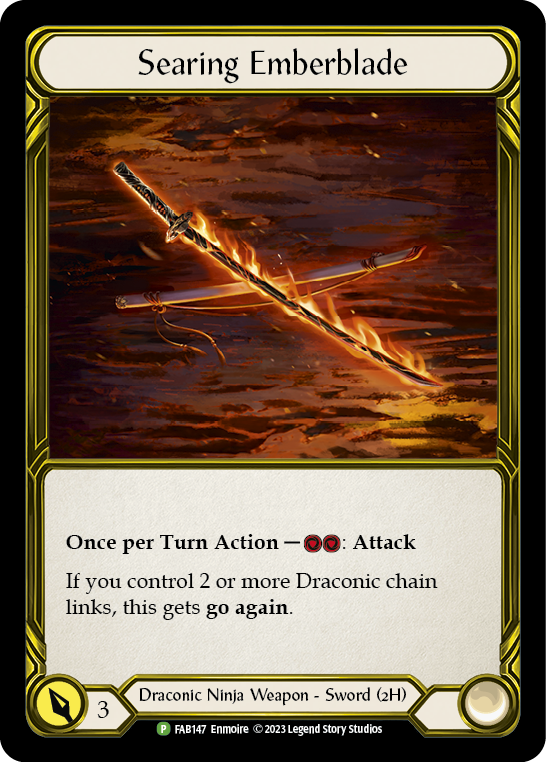
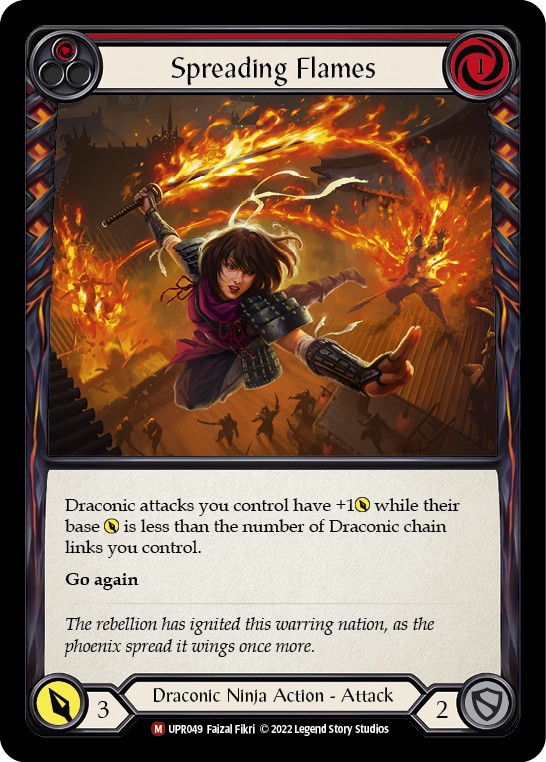
Fai's cards often cost 0; but Fai also has key cards with a 1-cost. When you do have a blue in hand, it's easy to pay for a 1-cost and add in the Searing Emberblade, making clean use of those 3 resources.
Fai's cards to have a bit of text - but I've found they often split into 2 quick categories that you can skim for. The first is "If" statements, which ask if you've played something else already. From the moment they see that "If", they can skim for the condition it's seeking: red card, Draconic chain links, or the special Ruptures that want 4 or more attacks (you can quickly teach Rupture as a special keyword and jump right past the reading here too). The second is "when this hits", which honestly isn't all that important until it's already been put on the chain, making it public info you can assist with.
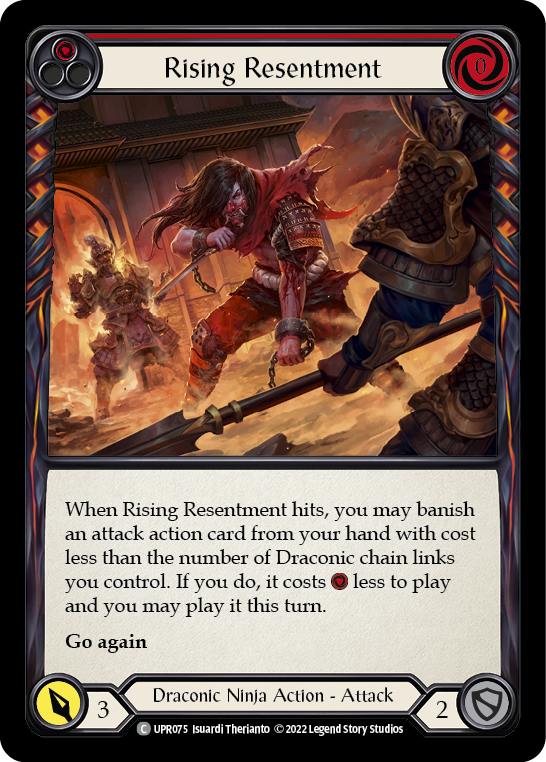
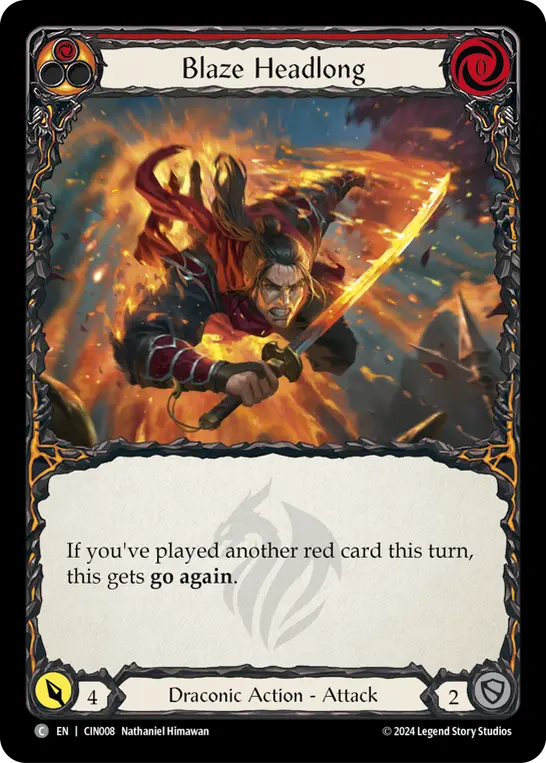
There's a cool trick to Fai's attacks that you may not have realized: capital G Go again can start a combat chain, while lower case g go again needs something ahead of it. This makes sequencing relatively easy to figure out. Additionally, the 1-2-3 count of Draconic chain links is open information, and you can remind them of the decreasing cost of that Phoenix Flame retrieval until they've caught on to it themselves. There's still optimization to be done beyond that, which serves as an exciting benchmark of growth as you see their sequencing skills develop.
As is well known, Fai is not in a great place in the meta right now. But as an aggro deck, there are plenty of games that Fai can force a win on. 1-2 is not an unreasonable goal for an Armory event on Fai, which is honestly a great outcome for a young player. It gives the chance to learn to lose gracefully, and the taste of victory to add a shine to that memory. Additionally, Fai is a novelty in the current meta, and you're unlikely to rub anyone the wrong way by contributing a Fai to the local scene (unlike, say, training up another Aurora - but we'll get to her in another article).
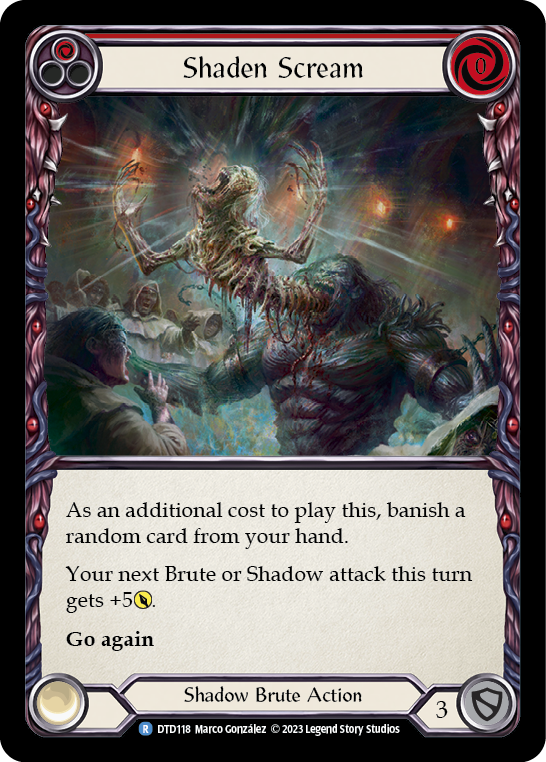


As for the visual component, I learned along the way what art didn't sit well with Ivy - and I keep a coin handy to lay over the artwork of any card she expresses discomfort with. Ivy's a spooky girl, naturally drawn to the 'cool' aspects of monsters and darkness, but body horror as found in much of the Shadow Brute card pool is too far. She also doesn't like being reminded of nightmares, so we don't talk about Nuu's mask. Finally, there are incidental depictions of violence that don't sit well with her; we proceed with caution through Outsiders.
The Draconic Ninja art doesn't trigger repulsion, making the deck as a whole a win along thematic lines. But we've had to side out Salt the Wound, despite its potential as a powerful chain closer.
The Decklist

Weapons
- Searing Emberblade (1)
Equipment
- Flamescale Furnace (1)
- Nullrune Gloves (1)
- Nullrune Robe (1)
- Snapdragon Scalers (1)
- Mask of the Pouncing Lynx (1)
- Tide Flippers (1)
- Stonewall Gauntlet (1)
- Tiger Stripe Shuko (1)
Loadout
- Blaze Headlong (Red) (3)
- Ancestral Empowerment (Red) (3)
- Engulfing Flamewave (Red) (3)
- Lava Vein Loyalty (Blue) (3)
- Phoenix Flame (Red) (1)
- Soaring Strike (Blue) (3)
- Lava Vein Loyalty (Red) (3)
- Searing Touch (Red) (2)
- Brand with Cinderclaw (Blue) (3)
- Double Strike (Red) (3)
- Mounting Anger (Blue) (3)
- Lava Burst (Red) (3)
- Sink Below (Red) (3)
- That All You Got? (Yellow) (3)
- Mounting Anger (Red) (3)
- Rising Resentment (Red) (3)
- Rising Resentment (Yellow) (3)
- Ronin Renegade (Red) (3)
- Red Hot (Red) (2)
- Rising Resentment (Blue) (3)
- Brand with Cinderclaw (Red) (3)
- Soaring Strike (Red) (3)
- Snatch (Red) (3)
- Spreading Flames (Red) (3)
There's not a whole lot here that requires justification - it's a fairly standard Emberblade list - but I highly recommend beginning by showing your young FAB-er the notables. This can be done with a quick flip-through to call out particular cards, or a more comprehensive 'sort by roles' before you've shuffled. Fai's attacks can basically be labeled in 3 groups: openers, extenders, and finishers. As noted above, openers are the Big Gs; extenders have little gs; and finishers don't have go again at all.
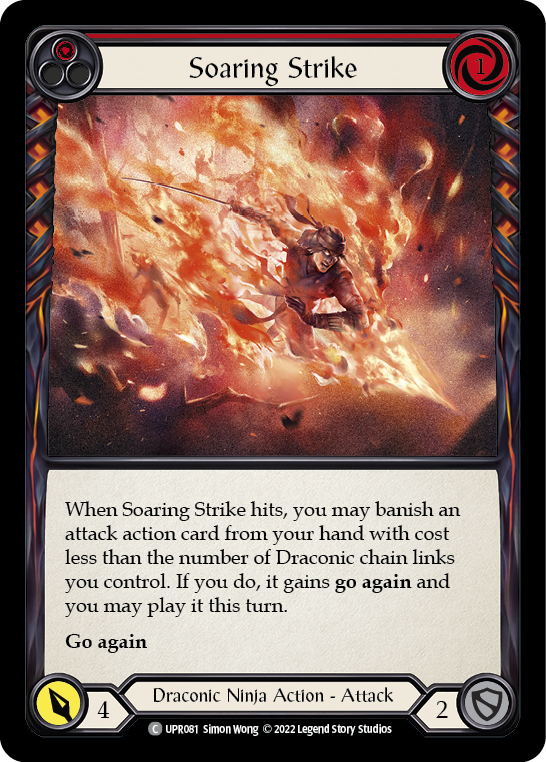
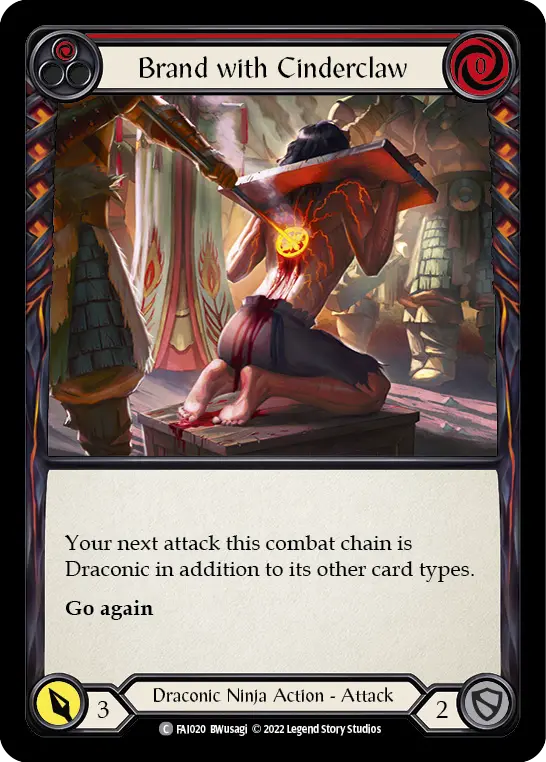
Among openers, there are differences, of course. Given the choice between Brand with Cinderclaw and Soaring Strike, for example, it's a better play to lead with Brand - but it can be complicated to explain the decision-making that goes into the latter's wall of text. Personally, I've reduced it to this: play the one with less text first. This will not always be the correct decision, but it will seldom be catastrophically wrong - and again, it's good to leave space for their own learning to shine through.
The middle of Fai's chain is the most freewheeling part of the turn. Here you can see strategy developing from the start. Does your kid throw high numbers first? Soften you up with low numbers? Do they try to get the wordy card to connect early?
Finishers are the cards you want to really go over with them. Pull out Lava Burst, Snatch, Engulfing Flamewave, and any Rupture cards you might have added from the sideboard (and Salt the Wound, if you've chosen to include it). Go over them individually, and be sure to explain what may make you choose to arsenal the card at the end of your turn rather than playing it out. Finally, point out how Mask of the Pouncing Lynx can search out Lava Burst or Salt the Wound.
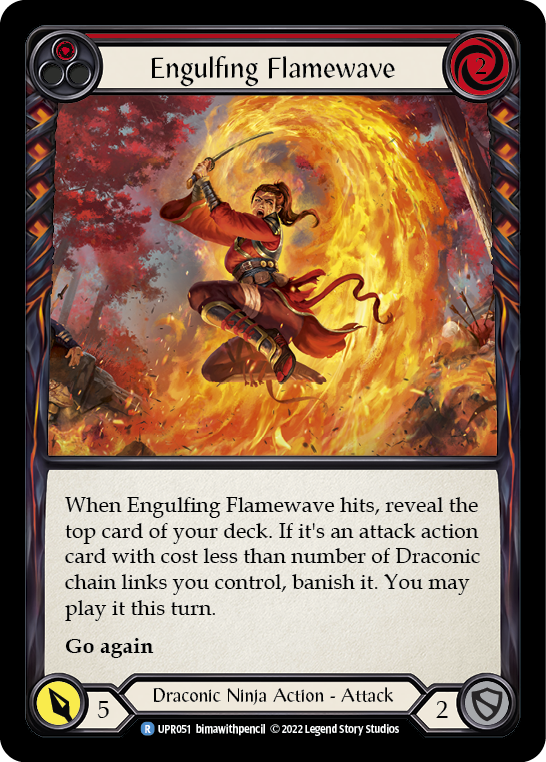
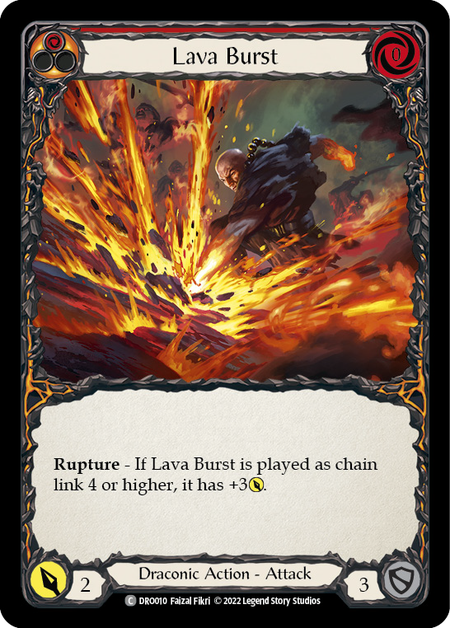

While most of the 'unconventional' cards are in the sideboard, you'll note that I've included Ancestral Empowerment in the main board. This is one of the most fun cards in the build, because it gives your kid the ability to legitimately surprise you. Call this one out specifically in the initial briefing, then point out the unique word "Reaction" and the lack of an attack value on the card. "After I block, you can surprise me with this to make your attack bigger." This applies to the sideboard defense reactions as well, though in reverse.
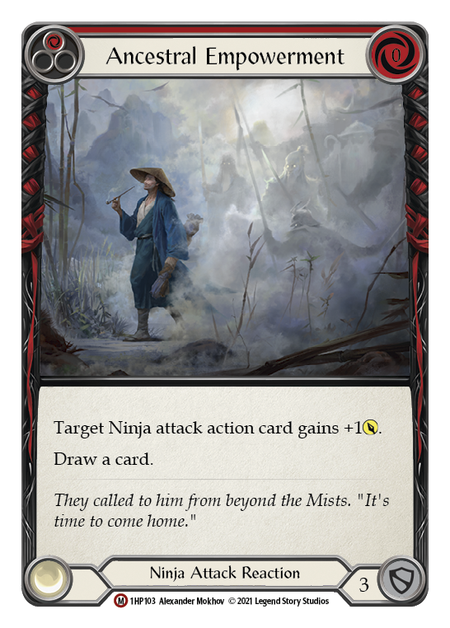
While we're adjacent to the subject, let's talk about defending. Playing on the defensive is one of the hardest decision-making moments in Flesh and Blood; and while we chose Fai in part for his predisposition toward holding all his cards for the attack, there will undeniably be moments where he should block.
This is where turn planning comes in - perhaps the most game-specific skill we're going to teach right out of the gate. I've taught Ivy to analyze her hand when she's defending, planning out which attacks she's going to use when it's her turn to attack, and how she's going to pay for them (if necessary). Then I say, "find the extras". If she starts her defending phase by running through this planning exercise, she can proceed through the rest of the turn with confidence, defending first with the extras before facing any hard decisions around sacrificing power from her own turn.
That said, Fai is a deck that can often make use of every card in his hand. When that's the case, fall back on the 3 roles we identified above: you need your opener, you want extenders, and you may not be able to support a finisher - but when your finisher asks little of you (such as Snatch), it can outrank every other role player.
Let's be clear: this is not a simple part of the formula! It will be important that you recognize how difficult defending can be, and that you give your young opponent the support they need as they confront your devastating attacks.
Fully On Board
While there are other ways to bring a young player on board with FAB, I have come to believe in the value of jumping straight into an Armory-ready Classic Constructed deck. First Strike is an incredible learning tool, and definitely has a role in teaching the basics; but you won't want to spend too much time there replaying the same matchup over and over. One of a TCG's greatest strengths is variety, and there are dozens of heroes to experience!
It may feel like the obvious next step is to start running your own Blitz decks into whichever First Strike hero they started with, but odds are your deck is gonna hit hard and fast (as is the norm of the Blitz format), which won't give them the space to learn much in the narrow windows between barrages. If you're going to start running your own decks, it's much better to do that within the confines of the CC format, where life can be used as a resource and there's time to learn before survival becomes the primary concern. Further, Flesh and Blood is at its very best in CC - the format around which all its cards are designed. It's always wise to put your best foot forward when pitching a game.
Ivy's brought Fai to a few Armories, where she's played as the designated 'bye breaker' - a casual opponent to play when the pairings are odd. This gives her opponent a bye-round win for their record straight out the gate; therefore, they can afford to be patient and offer help should Ivy need it. They can, of course, decline to play the pick-up game and take their round off as usual, but most would rather play a game than not. I keep her seated beside me at the event, so I can check in and she can ask for quick assistance - but mostly, she and her opponent work it out, and we've never had a bad experience. In time, we've moved on to other decks - but that's for another time.




